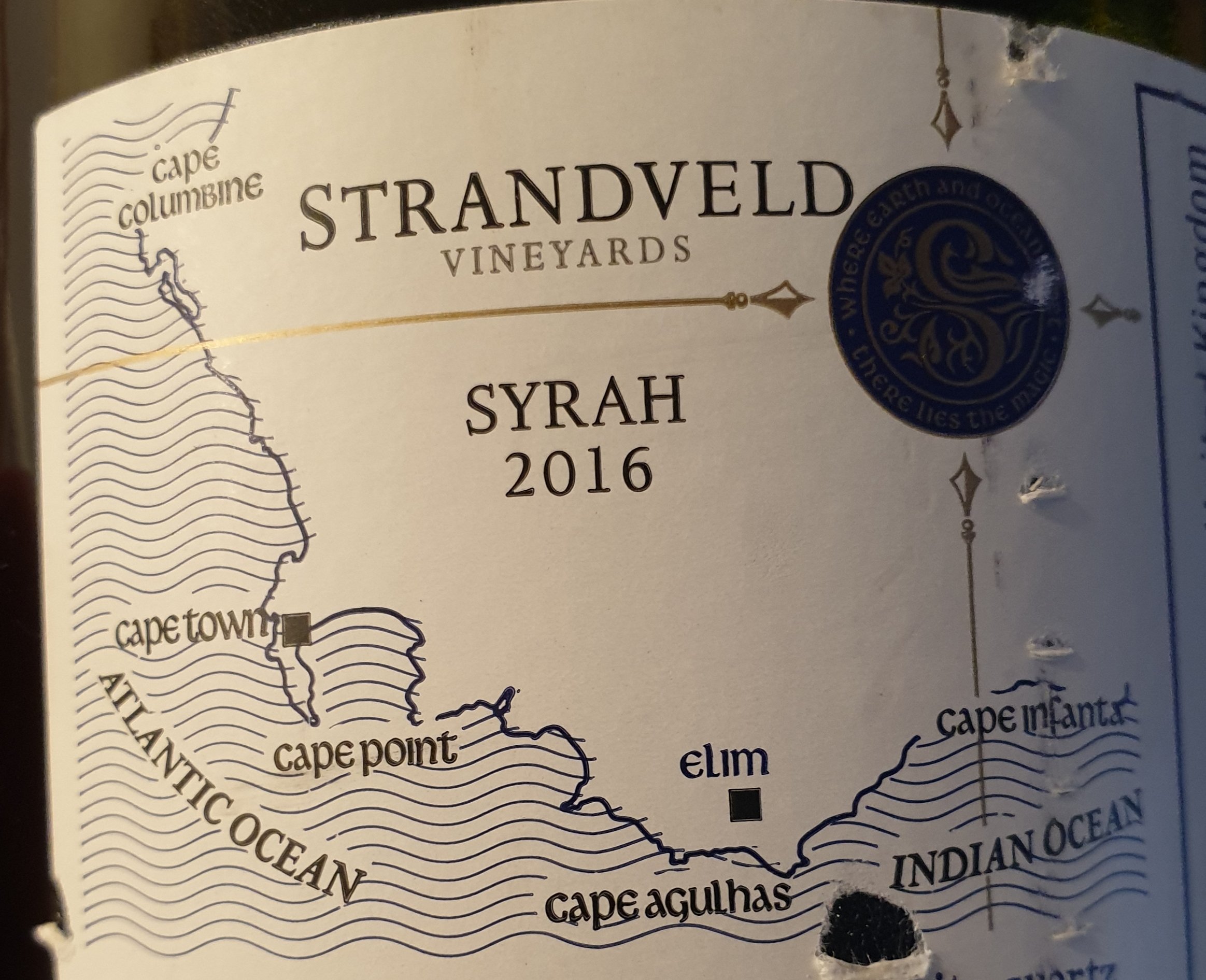I have, on occasion, found myself stranded. Usually on the wrong side of town. The sensible things would be to ask for directions but being male, I am genetically prevented from doing so. Tonight, not on the wrong side of town but instead at home, I find myself not so much stranded as Strandveld(ed). Strandveld is an Afrikaans word that one might assume has something to do with the English word stranded, especially given it describes a piece of land around Cape Agulhas, an area famed for shipwrecks. Strandveld actually means ‘beach vegetation’ (This does not describe me. I’m more of a ‘beach vegetable’ but that’s for another day)

Anyway, enough of this rambling nonsense. I was feeling bleak about missing the New Wave SA tasting that took place this week. I had originally planned to attend but duty called; I had to be in Brighton (talking of the wrong side of town) for a wine and food show. I’ve been a massive fan of SA wines for years now and have been privileged to work with some of the country’s greatest producers over the years. I was thrilled that way back when I did my Unit 3 exam there was a theory question on the country (which combined with a section of the practical covering Argentina led to me passing. Bacchus was smiling on me that day; thanks bru)

I’ve written about the history of SA wine many times so won’t rehash old ground here. It’s the only wine producing country with an actual birthday: 2nd February 1659 and today is producing some of the world’s most exciting wines. As I write this La Patrona is looking over my shoulder…of course, Argentina remains the world’s foremo….it’s ok, she’s gone. Whilst the most well known region within South Africa is Stellenbosch, there are many other regions worthy of attention.
I first tasted wines from Cape Agulhas when I was introduced to Ghost Corner; small production wines being made by Cederburg’s David Nieuwoudt. His SB/Sem blend blew me away and I’ve been looking for more wines from the region ever since. Cape Agulhas is 170 clicks south east of Cape Town and is the most southerly point in Africa. It sits where two worlds meet. Well, 2 Oceans. At this point the Atlantic runs into the Indian Ocean to produce a tempestuous and treacherous stretch of water. This area is famed for its shipwrecks (that’s a callback…smooth).

It has a decidedly maritime climate with strong winds. It’s humid here, being so close to the sea, and this could encourage rot. Those winds blow everything through however and keep things fresh. The average summer temperature here is only 20°C. These factors create a long growing season and preserve acidity whilst slowly building complex flavours. The wind can cause a problem for new vines, potentially damaging young and weak trunks and stems. The proximity to the sea can also lead to excess salinity in the soil; irrigation can be used to flush out unwanted sodium chloride.
Soils here were originally thought to be unworkable. The defining soil is ‘koffieklip’; an iron rich, hard red clay. There’s also shale and gravel. The region was first established by a Moravian mission in 1824 and was rediscovered in the 1990’s. Most of the vineyards centre around the town of Elim. The Strandveld itself is a belt of land spanning the coastline and this producer’s vineyards lie only 9 clicks from that stormy ocean.

Strandveld Vineyards was founded by a group of friends in 2001 when they purchased 800 hectares of an abandoned sheep farm. It is now Africa’s southern most winery with 69 hectares planted to vines. Conrad Vlok became the winemaker in 2004 and remains at the helm. The quality of fruit here is great; small berries with great concentration. (the same has been said of me). This Syrah comes from a plot planted on white quartzite gravel, which gives a pleasing and refreshing minerality to the wine. The fruit is destemmed and undergoes whole berry fermentation. There’s a maceration period of weeks before it goes into 300 litre French oak barrels for 18 months. 25% of the barrels are new. For giggles (and tannin softening, aromatic character) there’s 9% Viognier thrown into the mix.

At this point most would write an eloquent and in depth tasting note. I’m not in the habit of doing that so you’ll have to find one and make your own mind up. It’s a belting bit of kit mind. Alongside loving SA wine, I also love Syrah. These two things go together like points and Parker.
Syrah is South Africa’s second most planted red variety, occupying 10.3% of the total vineyard space. SA has around 94,000 hectares planted and in recent years has aligned planting to follow more international trends. Yep…Pinotage has slipped down the rankings (don’t shed any tears) and Chardonnay and Cab Sauv have muscled their way in. Cab S. Is the most planted red if you were interested.
If I’ve got to be stranded anywhere I wouldn’t complain if I had a bottle of Strandveld with me. Thanks SA for your incredible kit; keep on innovating and exciting.
Remember: it’s just grapes.

Great Read Lee 🤣🍷💯💯👌👌👋👋👋👋👋
LikeLiked by 1 person
Thanks very much sir!
LikeLike